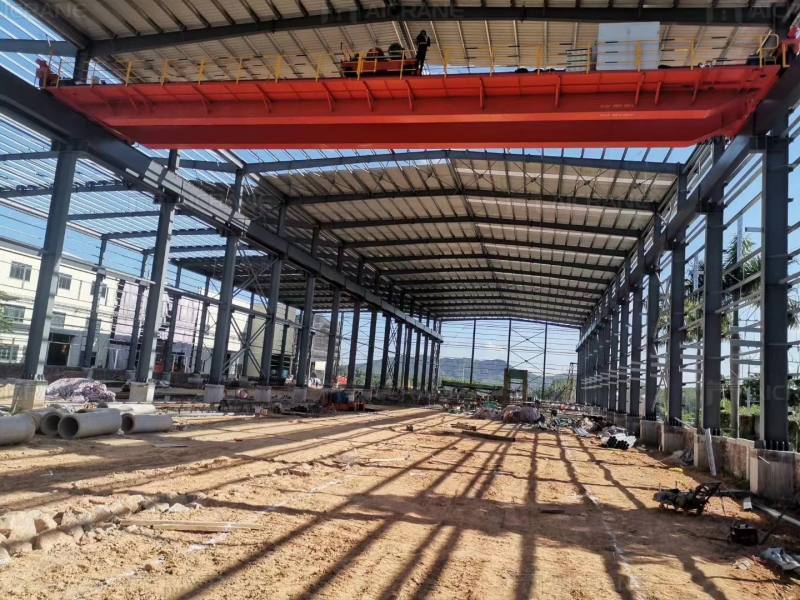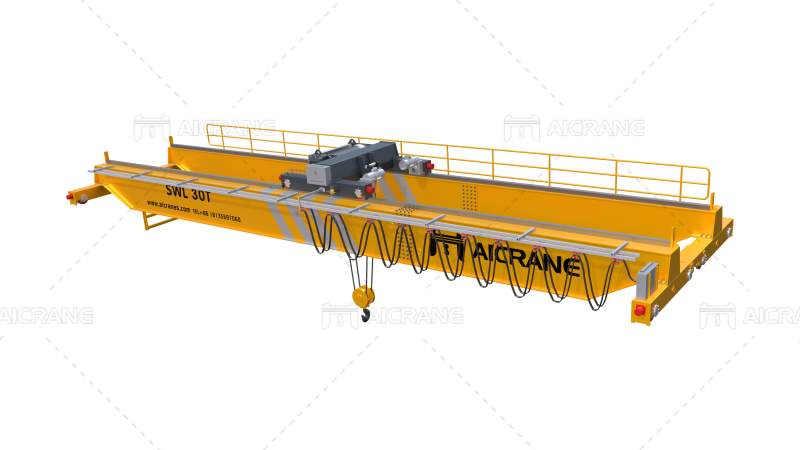Using a 30 ton overhead crane safely requires strict adherence to safety protocols and guidelines. Here are some general steps that you can follow:
Read and understand the operator’s manual: Before operating the crane, read and understand the operator’s manual provided by the manufacturer. Make sure you are familiar with the crane’s features, controls, and limitations.
Conduct pre-operation inspection: Before using the crane, conduct a pre-operation inspection of the crane to ensure that it is in good condition. Check the cables, hooks, brakes, and other parts for any signs of damage or wear and tear.
Use appropriate personal protective equipment (PPE): Wear appropriate PPE such as a hard hat, safety shoes, and gloves when operating the crane.
Follow proper lifting procedures: Follow the proper lifting procedures for the type of load being lifted. Make sure the load is properly rigged and that the crane is capable of lifting the load.

Clear the area: Make sure the area where the overhead bridge crane will be used is clear of people, equipment, and other obstacles. Use warning signs or barriers if necessary to prevent unauthorized access to the area.
Use the crane controls correctly: Use the crane controls correctly to ensure smooth and safe operation. Avoid sudden movements and use slow, controlled motions.
Never exceed the crane’s capacity: Never exceed the crane’s capacity. Keep in mind the weight of the load, the height of the lift, and the boom angle.
Use spotters: Use spotters to help guide the crane operator and ensure that the load is properly positioned and secured.
Communicate effectively: Maintain clear communication with all personnel involved in the operation. Use hand signals, radios, or other means of communication to ensure everyone is aware of what is happening.
Conduct regular maintenance: Conduct regular maintenance on the crane to ensure it remains in good working condition. Report any issues or concerns to the appropriate personnel and address them promptly.
Remember, safety is always a top priority when operating a 30 ton overhead crane. By following these guidelines and using common sense, you can help prevent accidents and injuries.

Main Components of a 30 ton Overhead Crane
Bridge: The bridge is the main horizontal beam of the crane that spans the distance between the two end trucks. It supports the hoist and trolley and moves along the runway beams.
Runway beams: The runway beams are the horizontal beams that support the bridge and allow it to move along the length of the crane bay. They are typically attached to the building structure.
End trucks: The end trucks are the wheeled structures that support the bridge and allow it to move along the runway beams. They contain the drive mechanisms that move the bridge along the runway beams.
Hoist: The hoist is the lifting mechanism that is used to lift and lower the load. It consists of a motor, a brake, a gearbox, and a drum on which the wire rope is wound.
Trolley: The trolley is the mechanism that moves the hoist horizontally along the length of the bridge. It consists of wheels that run on the bridge rails and a motor that drives the trolley.
Wire rope: The wire rope is used to lift and lower the load. It is wound around the hoist drum and passes through the hook block to which the load is attached.
Hook block: The hook block is the assembly to which the load is attached. It consists of a hook, sheaves, and a frame.
Pendant control: The pendant control is the handheld device that is used to operate the crane. It allows the operator to control the movements of the bridge, trolley, and hoist.
These are the main components of a 30 ton overhead crane, and each component plays an important role in the safe and efficient operation of the crane.